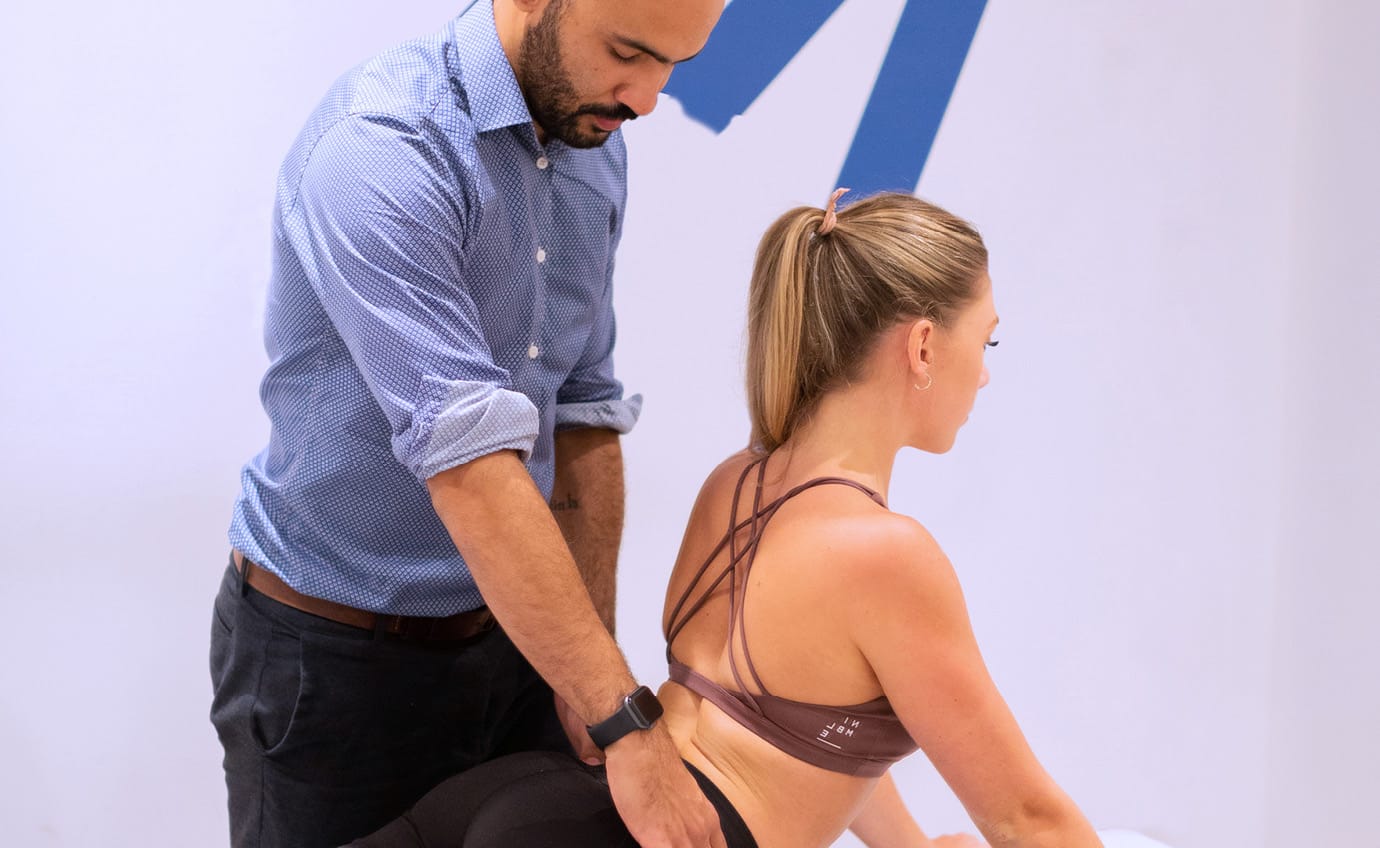Those who have heard of McKenzie therapy might be forgiven for thinking it’s purely a treatment for lower back pain – but it’s so much more than that. It can be used for many conditions, from treating a broken arm, through to a neck injury, with scientifically proven results.
But what is McKenzie therapy?
McKenzie therapy is a system of analysed repeated movements, that can be used to relieve pain or improve mobility that has been caused by a musculoskeletal injury or condition. The methodology consists of four main steps: assessment, classification, treatment and prevention (but more on these later!).
One of the key benefits is that a patient has a high level of control over their own treatment, being able to perform the movements or poses prescribed to them (once mastered) up to six times a day without the supervision of a physio being required at all times.
One of Spectrum’s lead physios, Ant Brightwell, is one of a very few McKenzie credentialed therapists in London. Ant specialises in the management of injuries to all the major joints and, where appropriate, uses a combination McKenzie therapy and the other treatments Spectrum offer to create tailored treatment plans for patients.
Where did McKenzie therapy come from?
McKenzie therapy was first proposed by a physiotherapist from New Zealand called Robin McKenzie. After graduating from the New Zealand School of Physiotherapy in the 1950s he started a private practice in Wellington, and it was here that he developed a special interest in treating spinal disorders, which led to the development of his treatment techniques. His theories were consequently supported with scientific evidence and the effectiveness of his treatments has since been scientifically validated.
Years later, Robin McKenzie created The McKenzie Institute International, which became a globally renowned education facility for physios, doctors, chiropractors and other allied health professionals wanting to learn the revolutionary techniques from the master himself. To date, specialists in more than 40 different countries around the world have been educated in the McKenzie method and its popularity continues to grow today.

How does the McKenzie technique work?
As mentioned above, there are four key steps that make up the McKenzie method, and each of these are crucial in the overall approach:
Step 1 – Assessment
All patients must begin with an assessment, which may include reviewing your medical history and performing certain movements or postures.
What sets this apart from other clinical assessments is the repetition of the movements you perform, which when combined with careful questioning, allows your physio to ascertain how your condition responds to the repeated movements and form a diagnosis.
Step 2 – Classification
One the assessment is complete your physio will be able to determine which musculoskeletal classification your condition falls into.
This helps them to develop a personalised treatment plan of repeated movements and postures collaboratively with you. Most of the time, these exercises will be able to be self-managed at home.
Step 3 – Treatment
Now, time for the treatment itself! Once a classification has been determined you will be prescribed a sequence of safely determined progressions of exercises. This is when your physio will actually take you through your treatment plan, teaching you the correct technique and giving you guidance on how your symptoms should feel and change as you do your exercises, so you know what to look out for.
At this stage, your physio might also do some hands-on treatment until you have mastered the movements yourself.
Step 4 – Prevention
Once you have self-treatment under control, you will have gained insights into how to prevent your issue from flaring up again.
And if it does, you’ll know how to treat it. But if you do feel like you need extra support, you always have the option of booking an appointment with your physio too.

Are McKenzie exercises safe?
Generally speaking, McKenzie therapy is extremely safe. However, like most exercises, there will be some situations where McKenzie methodology isn’t appropriate, for example if you have just fractured your spine or had major surgery on your back.
We recommend that you only perform exercises prescribed to you by your physio, so you can feel confident your technique is correct and the specific exercises are the best treatment for your individual condition.
Do you want to learn more about McKenzie therapy and whether it’s right for you? Visit our website and lock in a consultation today.



